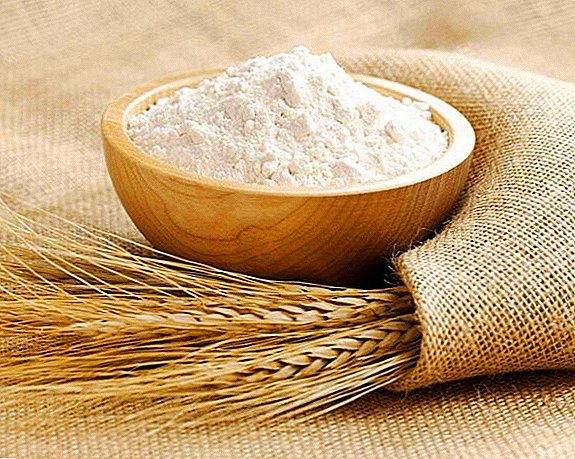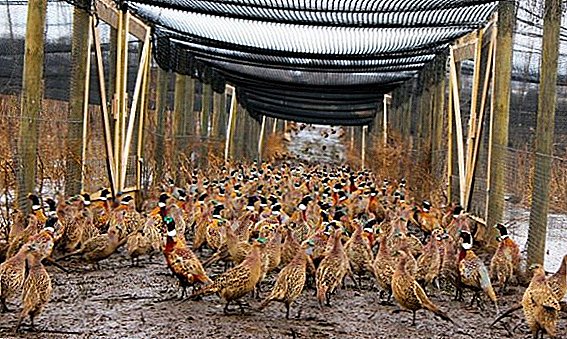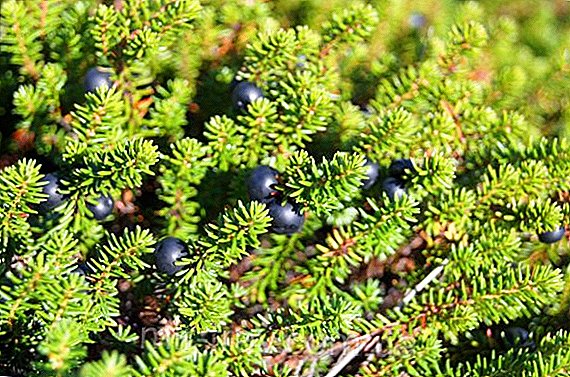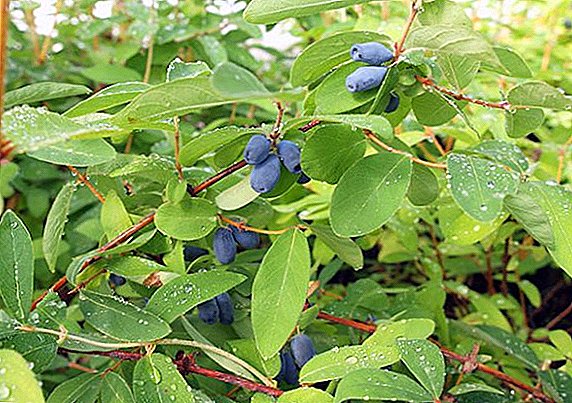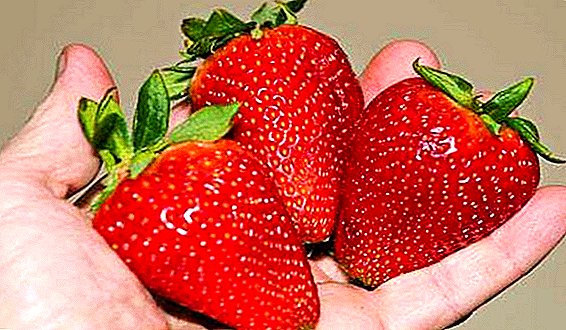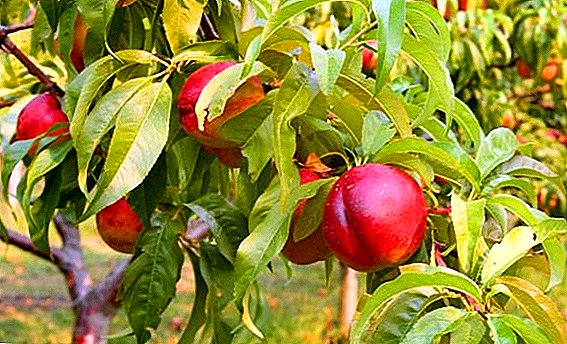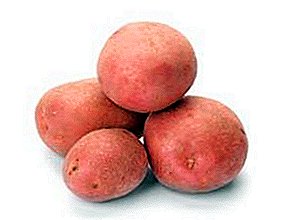
Potatoes are one of the most important crops that are grown both in small garden plots and in endless fields.
Modern potato varieties are distinguished by high yields, resistance to various diseases and pests, excellent taste.
Among all the varieties can rightly be distinguished variety Bellaroza, which has established itself from the best side and is popular in many countries.
Variety description
| Grade name | Bellarosa |
| general characteristics | early table variety of Finnish selection with good taste |
| Gestation period | 50-60 days |
| Starch content | 12-16% |
| Mass of commercial tubers | 120-200 g |
| The number of tubers in the bush | 8-9 |
| Yield | up to 320 kg / ha |
| Consumer quality | good taste, crumbly flesh |
| Recumbency | 93% |
| Skin color | pink |
| Pulp color | light yellow |
| Preferred growing regions | suitable for all types of soil, recommended for the Central Black Earth region |
| Disease resistance | resistant to most diseases, including late blight |
| Features of growing | preferably germination before planting |
| Originator | EUROPLANT PFLANZENZUCHT GMBH (Germany) |
Root vegetable
 Bellarosa is a variety of table potatoes bred by German breeders and successfully cultivated in temperate climatic zones. It is grown mainly in the open spaces of Ukraine, Moldova and almost everywhere in Russia.
Bellarosa is a variety of table potatoes bred by German breeders and successfully cultivated in temperate climatic zones. It is grown mainly in the open spaces of Ukraine, Moldova and almost everywhere in Russia.
The main characteristics of the variety Bellaroza, for which it is particularly valuable, are:
Precocity. Harvesting is carried out within 50-60 days after planting, and the digging can be carried out already on the 45th day. In the southern regions there is the possibility of collecting two harvests per season: after the first harvest in the first decade of July, you can take advantage of the vacated areas for the next planting. The second collection falls on the first decade of September.
Yield. Harvest this variety gives a stable and quite high - up to 20-35 tons per 1 hectare of land.
To compare the yield and keeping quality of a variety with others, you can use the table below:
| Grade name | Yield (kg / ha) | Stability (%) |
| Serpanok | 170-215 | 94 |
| Elmundo | 250-345 | 97 |
| Milena | 450-600 | 95 |
| League | 210-360 | 93 |
| Vector | 670 | 95 |
| Mozart | 200-330 | 92 |
| Sifra | 180-400 | 94 |
| Queen Anne | 390-460 | 92 |
Drought tolerance. Bellarosa completely calmly endures dry weather conditions.
Unpretentiousness and undemanding of moisture makes it possible to grow potatoes in large areas that are not equipped with an automatic irrigation system.
Demanding on soils. Bellarosa grows well on all types of soils, except heavy clay.
Use and taste. Table variety of potatoes. When evaluating on a five-point scale, the rating “5” corresponds to taste. After heat treatment, moderate friability remains.
The taste of potatoes is largely dependent on the amount of starch in its tubers. In the table below you can see what this indicator is for different varieties:
| Grade name | Starch content |
| The pot | 12-15% |
| Svitanok Kiev | 18-19% |
| Cheri | 11-15% |
| Artemis | 13-16% |
| Tuscany | 12-14% |
| Yanka | 13-18% |
| Purple Haze | 14-17% |
| Openwork | 14-16% |
| Desiree | 13-21% |
| Santana | 13-17% |
 Resistance to mechanical damage. Resistance is high - when harvesting, almost 99% of tubers retain excellent condition.
Resistance to mechanical damage. Resistance is high - when harvesting, almost 99% of tubers retain excellent condition.
Disease resistance. Bellarosis is indifferent to potato cancer, bacterial decay, scab, viruses, Alternaria, Fusarium, Verticillosis, Golden potato cyst nematode, late blight, Rhizoctonia and black leg.
Storage. This variety stands out among other early varieties of excellent keeping quality. Often, early potatoes are stored for long, but Bellarosa is an exception. Losses during storage reach a maximum of 6%. All this is due to resistance to damage during collection and to diseases.
Read more about terms, temperature and storage problems in additional articles on the site. And also all about storage in the winter, in boxes, on the balcony, in the refrigerator, of peeled root crops.
The escape
Planting of this root is different from other beautiful decorative and healthy appearance. Shoots uniform. The shoots are semi-upright, reaching 70-75 cm per din and having strong stems. The leaves of the bush are large, juicy, closed, at the edges have a weak waviness. The inflorescences are medium in size with a reddish-purple hue. One bush gives 7-10 almost identical large tubers.
Why is not Bellarosa blooming?
It happens that the potato variety Bellarosa does not bloom>. Often this leads to feelings for the next harvest. Of course, the absence of flowers is a sign of a disease or weakness of the plant, but not in Bellarosa.
Since these root crops are classified as superearly varieties, the formation and maturity of the crop occur so quicklythat they are protected from diseases, ahead of the appearance of the Colorado beetle and simply do not have time to bloom.
The quality and quantity of tubers harvested in the future lack of flowering is minimal. Also the plant can throw off flowers and buds if the ambient temperature exceeds +22 degrees (bloom occurs at + 19 ... +22 degrees).
In addition, the garden can visit a living creature that does not do any good or harm. it ground beetle and potato ladybird. They can quickly eat the flowers.
A photo


Features of growing
Sowing
15-21 days prior to the proposed planting, seed potatoes must be laid out in wooden boxes in 1-2 layers or scattered indoors, keeping it in daylight and at a temperature of no more than +15 degrees until the appearance of the eyes.
Preparation of the planting site should be done in the fall, and in spring it is only necessary to dig it up. When sowing, consider the size of future tubers (they are big enough!).
It is recommended to follow the 90 * 40 cm scheme for disembarking Bellarosa.that means keeping the distance between the holes 40 cm, and between the rows 90 cm. The holes for planting are better to form a depth of 8-10 cm, then add potash-phosphate fertilizers, put the planting potatoes on the bottom, bury and level.
Fertilizers
Bellarosa, like the other early ripe varieties, needs feeding with magnesium-containing substances. Such top dressing is especially important for the root crops grown in sandy soils. Fertilizer can serve dolomite flour, which must be made at the rate of 50 g per 1 square meter.
Also, in detail about how, how and when to feed potatoes, how to do it properly when planting.
 When growing potatoes, additional chemicals are often used to improve yields or pest control.
When growing potatoes, additional chemicals are often used to improve yields or pest control.Read all about the benefits and dangers of fungicides, herbicides and insecticides in useful articles on our site.
Care
For maximum yield, for the potatoes need care. Agrotechnology is quite simple. The first and one of the most important processes is soil loosening and hilling. This event is held to destroy weeds and break the soil crust, which is formed after precipitation and prevents the soil from feeding on oxygen.
It is better to carry out 2-3 soil loosening over the entire growth period. The first is carried out 7-8 days after planting, another 7-8 days later, and at the very beginning of germination. Due to the drought tolerance of Bellarosa, there is no need for additional watering; natural precipitation is enough for him. Mulching will help to control weeds.
There are many ways to grow potatoes. Some of them are suitable for the harvest for their own needs, some are applicable in business scale. We want to share with you useful information about Dutch technology, about growing under straw, in boxes, in bags and barrels.
We also offer you other varieties of potatoes with different ripening terms:
| Late-ripening | Medium early | Middle late |
| Picasso | Black Prince | Blue |
| Ivan da Marya | Nevsky | Lorch |
| Rocco | Darling | Ryabinushka |
| Slav | Lord of the expanses | Nevsky |
| Kiwi | Ramos | Courage |
| Cardinal | Taisiya | Beauty |
| Asterix | Lapot | Milady | Nikulinsky | Caprice | Vector | Dolphin | Svitanok Kiev | The hostess | Sifra | Jelly | Ramona |


